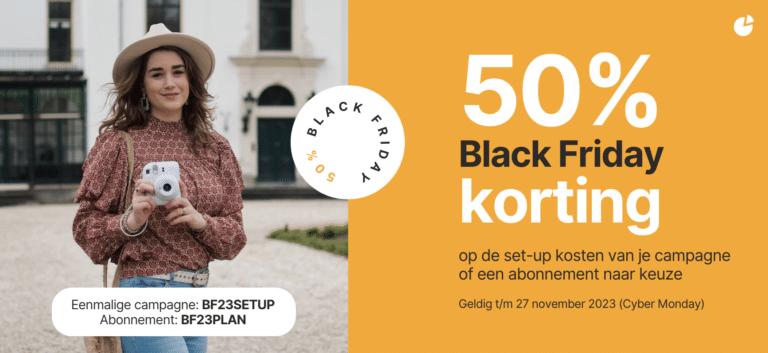Influencer marketing can no longer be ignored. Micro-influencers are being used more and more and preferred over macro-influencers. That is not without reason. We’ll explain why!
What is influencer marketing?
What exactly is influencer marketing? Influencer marketing is a form of marketing in which you deploy one person or more to convey your media message. The brand does not convey the message itself, the influencer does this for the brand.
The influencer himself is an (influential) person with one or more social media channels. Influencers often have many followers, also known as fans. These followers are, as it were, ‘influenced’ by the influencer, when she expresses her preference about, for example, a certain product or brand. Because the influencer does this, instead of the brand, it is more credible for consumers.
The difference between macro and micro influencers
Macro influencers have a huge reach of 100,000 followers or more. A large reach is often also why advertisers choose to work with a macro influencer. They are seen as a sort of ‘celebrities’. The question is whether you should use a macro influencer, because are they close enough to their followers to really be able to influence them?
Micro influencers have a reach between 1,000 and 100,000 followers. This number ensures that they can still build a relationship with their followers, for example by responding to comments and messages. They often have a much more specific target group, because they generally focus on a particular niche. This is usually the reason why they are being followed by their fans. Followers can easily relate to the micro-influencer.
Why do brands choose to partner with micro influencers?
Advertisers and brands choose macro influencers for their reach. But why do brands choose to use a micro-influencer? This has to do with authenticity, commitment and a more specific target group. We’ll explain.
Authenticity of the micro-influencer
Micro-influencers maintain their authenticity by working with products and brands that they really support. This is because they work much more from their passion and conviction. Often they have a certain subject on which they have a lot of knowledge, for example someone who knows a lot about wines. When such a person promotes a particular wine, it is much more credible than when Kim Kardashian does. Nice picture, but does Kim really know all about wine and are her followers all wine fans?
A more specific target group
Macro influencers often do not really have a specific target group, because the followers mostly don’t follow a macro influencer for one specific reason. This is different with a micro-influencer. A micro-influencer is followed by her followers for a reason, often a shared passion or interest. It therefore reaches a much more specific and loyal target group.
Engagement with target group
A logical consequence of the above is that the engagement (interaction) with the target group is much greater with micro-influencers than with macro-influencers. The company Markerly has investigated this. They indicate that influencers in the range of 10,000 – 100,000 followers have the best combination of engagement and broad reach, with like and comment rates than influencers with more than 100,000 followers.
They also indicate that you still appeal to a large audience, but that the followers are connected to the influencer. As also explained above.
Find the right micro influencers with LinkPizza!
With LinkPizza you can easily find the right micro-influencers for your campaign. Our marketplace has over 2,000 micro-influencers, including Instagram influencers and bloggers. You can choose to set up a campaign and influencers will pitch their motivation and rate. You do not have to find them yourself, they will find you. Or start a campaign and invite appropriate influencers quickly and easily yourself.

